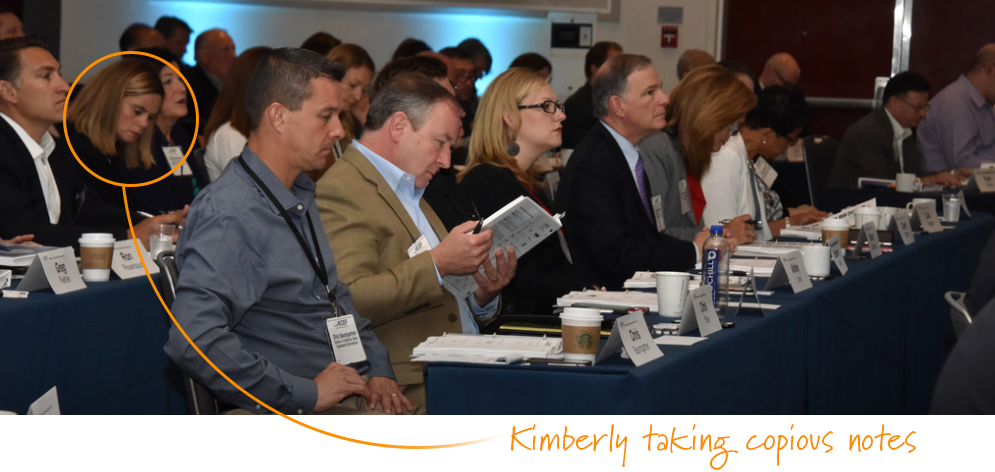
On May 30, more than 200 event industry executives gathered at Sam Lippman’s ECEF in Washington, D.C., to glean inspiration and share ideas. As a proud event sponsor, mdg was there, eager to take it all in. In case YOU weren’t there, don’t worry, we took notes…
Kicking off the morning, Scott Schulman, Chief Executive Officer of UBM Americas, shared proven strategies for maximizing event value. After reminding the audience about the important role we play organizing communities and advancing industries, Schulman challenged us to further leverage event brands–through international expansion, content offerings, geographic extension and more. We need to be “thinking beyond the booth” and beyond the week of our shows—devising strategies for converting event attendance into paid memberships, industry certifications and training, consulting, international resources, etc., to fully maximize engagement and, more importantly, revenue.
Koley Corte, Head of Digital for Reed Exhibitions, and Erin Lee, Managing Director of Marketing Biotechnology Innovation Organization (BIO), spoke on “Connected Events,” reminding the audience that “digital is not about a ‘thing’ it’s about ‘a way of doing things.’” Furthermore, they said that organizations shouldn’t have a digital strategy, rather a customer strategy that includes digital as a tactic. Corte challenged event organizers to view the professional(s) responsible for digital not as order takers after the fact, but as valued business partners with a seat at the strategic planning table.
The discussion started in the Connected Events session about managing meaningful organizational change—evolving skill sets, mindsets, and tools—was continued by Bill Darcy, CEO, National Kitchen and Bath Association, and Jerry Howard, CEO, National Association of Home Builders. To effect real change, leadership doesn’t just flip a switch—there has to be a culture shift with buy-in across teams. Declaring something from the corner office doesn’t mean it will happen.
Regina Hopper built upon that sentiment, outlining the effective organizational model she uses as President and CEO of the Intelligent Transportation Society of America. Essentially, Regina counts on her internal staff to “drive the show to its purpose” and outsources logistics, operations and marketing to a team of trusted vendor partners orchestrated by Lee Ann Burr. Regina also thinks beyond the week of the show to measure the success of her annual meetings by evaluating public policy achievements, whether audiences outside the core become more engaged, if a member of Congress is more receptive to a meeting, if regulatory agencies begin to participate, etc. Her advice to others looking to make drastic organizational change and/or to reinvent their event? “You can best manage change if you’re careful, deliberate, transparent and collaborative.”
Tying a bow on the day was Juliet Funt, CEO of WhiteSpace at Work, who posed the question, “What would you do if you caught someone thinking at work?” And she encouraged us to “embrace the pause” remembering that if talented people don’t have time to think, the business will suffer. She said that we should ask ourselves four questions to begin the WhiteSpace simplification process …
- Is there anything I can let go of?
- When is “good enough,” good enough?
- What do I truly need to know?
- What deserves my attention?
If you were fortunate enough to attend ECEF, share these notes with a colleague who wasn’t and use them to facilitate a conversation about the changes you want to see in your organization and/or at your next event.


